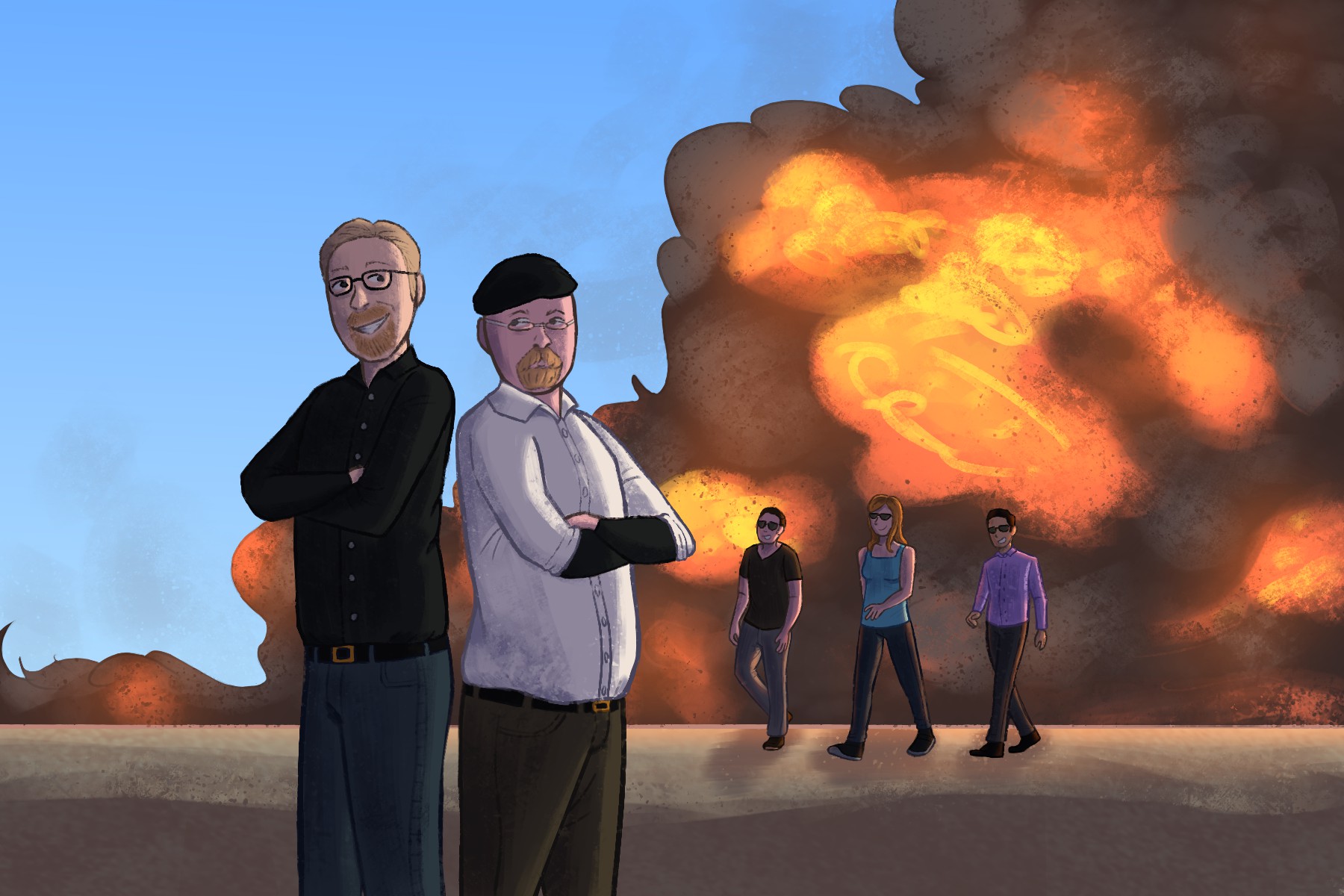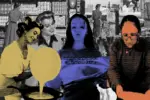The show “MythBusters” moved popular scientific discussion away from the dreariness of staid laboratory rooms and esoteric jargon and toward the excitement of big explosions and fast cars.
Hosted by Adam Savage and Jamie Hyneman, the show premiered on the Discovery Channel on Jan. 23, 2003. In each episode, they explored the science of MythBusters by putting a myth to the test through rigorous experimentation. Savage and Hyneman then deemed a myth “Busted” if it was completely wrong, ”Plausible” if there seemed to be a glimmer of truth to it, or “Confirmed” if they successfully proved that the myth was true.
The show gained an immense following over its 17-year run. Fans often flocked to the show’s filming location at M5 Industries in San Francisco to catch a glimpse of an exploding manhole cover flying through the air.
Adam Savage and Jamie Hyneman
Adam Savage and Jamie Hyneman are both special effects experts, whose backgrounds in making props for movies and commercials were vital to the success of the show. Savage actually worked under Hyneman at M5 Industries before the show’s premiere, which created an unusual dynamic between the two hosts. They never got along throughout the show’s production, but they maintained fantastic chemistry on screen.
Adam Savage is a red-haired man from the city who always attracted the camera’s attention with his talkative and high-strung nature. Jamie Hyneman, a man who grew up on a farm and sports a mustache and beret, always sought to avoid the limelight. Their opposing personality traits combined to enhance the show’s methodology: Adam’s impulsive nature and Jamie’s methodical outlook often solved the same experimental problem in two completely different ways.
One great example of this dynamic is when Adam and Jamie tested a myth about painting with explosives that originated from the British comedy series “Mr. Bean.” Adam created a snowflake frame that, while successful in creating smaller pieces of artwork, did not cover the entire room with paint. Jamie created a steel sphere that looked similar to the Death Star and, in the end, splattered very little paint across the room. While both methods failed, they provided an engaging display of the hosts’ ingenuity.
The Build Team
Tory Belleci, Grant Imahara, and Kari Byron formed the “Build Team” and brought youthful exuberance to their myth-busting exploits. The team served as the perfect counterpoint to the Savage/Hyneman duo, as the trio shared the workload of each episode by testing another myth at their adjacent studio location, M6 Industries.
Belleci served as the danger-loving daredevil who loves power tools and loud explosions. Imahara is a robotics-loving nerd whose quirky sense of humor lifted the audience’s spirits. Byron proved adept in both artistic and scientific disciplines and has a dynamic television personality.
The addition of the Build Team allowed the show to grow exponentially as it could tackle many more myths per episode. While the trio’s experimental procedures often mirrored the practices of the original hosts, the Build Team injected even more energy into their own investigations.
The Myths
The myths that “MythBusters” tackled varied widely. The show often featured myths from popular shows or movies such as “The Simpsons” or “James Bond.” Historical legends often served as great myths to debunk, from the Archimedes Death Ray to a Ming Dynasty tale about whether rockets strapped to a chair can launch a person into the air. The series also investigated popular idioms, placing lead balloons and bulls in a china shop in experimental settings. Simple examinations of the power of guns and explosions were often more than enough to generate a myth.
The Disgusting Car
Sometimes, the myths that “MythBusters” examined were simply grotesque. For example, Adam and Jamie tested whether a car could become so gross that no one would buy it. The source that they pulled this myth from recommended placing a decomposing body in the car, so the hosts brought in two pig carcasses and let them decompose for a couple of months. Even though the car remained quarantined in a giant container, its stench proved so revolting that the crew members who opened the container threw up. A crime scene cleaner even said that the car was one of the worst clean-up jobs he had ever dealt with. Thankfully, television screens cannot transmit a sense of smell. Nevertheless, the remains of a rotting pig carcass seeping through the vehicle’s door still makes for a disconcerting image.
Underwater Car Escape
At other times, the myth was a genuinely beneficial lesson that viewers could learn from — such as the harrowing myth of the underwater car escape. Adam attempted to escape from a car submerged in a pool in order to figure out how people could successfully exit a car sinking to the bottom of the ocean. It turns out that it is possible to escape from the vehicle so long as the water in the car remains below the driver’s waist.
Adam and Jamie also tested tools that could help passengers escape the vehicle and found that either a window-breaking hammer or a spring-loaded center punch will work in an emergency. However, attempts to open the car window with keys, boots or window cranks failed utterly. The image of Adam’s failure — cheeks puffed out in desperation, lunging for the safety operator’s respirator — remains cemented in the mind. This episode has, in fact, saved lives; some people heeded the show’s warning and placed window-breaking hammers in their cars.
Giant Paper Folding
A great moment from the Build Team occurs in the same episode. The Build Team tackled the myth that paper cannot fold in perpendicular halves more than seven times. They rented out a giant airplane hangar to test the myth with a football field-sized sheet of paper. The image of huge forklifts lifting the delicate sheet of paper high in the air was fascinating to watch; the forklifts took the myth to new heights. In the end, while it seemed theoretically possible for the Build Team to fold the sheet using thinner paper, they busted the myth.
Educational Value
Safety was a primary concern on “MythBusters.” The show’s classic line, “Don’t try this at home, we’re what you call experts,” occurred during the title sequence of every episode and remained a hallmark of the series. In general, even though they dealt with immense explosions and dangerous situations, the crew avoided serious injury through strict safety procedures. The show demonstrated good scientific procedure to its audience in a safe and orderly manner.
“MythBusters,” while not an educational show in the traditional sense, masterfully showcased the science of MythBusters through its consistent use of the scientific method. I first encountered the show in science class when my teacher utilized it as an engaging example of what scientists can actually do. However, the true appeal of the show isn’t just its educational value. It’s in watching the hosts revel in their experiments and discoveries. The genuine enthusiasm and distinct personalities of each host are what truly captivate viewers, making even a massive C4 explosion feel profoundly meaningful.
Watch “MythBusters” on the Discovery Plus app, linked here.
















